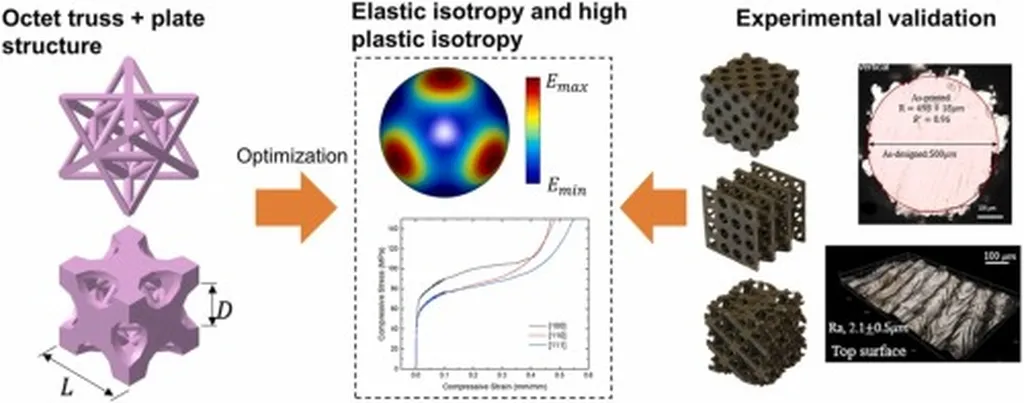In the realm of structural engineering, a recent study has shed new light on the vibrational behavior of periodic lattice trusses, offering insights that could resonate through the energy sector and beyond. Mikhail N. Kirsanov, a researcher from the National Research University “MPEI” (Moscow Power Engineering Institute), has published a significant paper in the journal “Structural Mechanics of Engineering Constructions and Buildings” (translated from Russian), delving into the natural frequency spectrum and fundamental frequency formula for plane periodic lattice trusses.
Kirsanov’s work focuses on a specific type of truss—a plane, statically determinate structure with a cross-shaped lattice. The truss members are elastic and possess uniform stiffness, with both supports pinned, making the truss externally statically indeterminate. The study considers a model where the mass of the structure is evenly distributed across its nodes, vibrating vertically.
The research employs the Maxwell-Mohr method to determine the truss’s stiffness, calculating member forces using the method of joints. Kirsanov leveraged the symbolic computation capabilities of Maple mathematical software to derive these forces. The eigenvalues of the matrix for trusses with varying numbers of panels were then determined using Maple system operators.
One of the key findings of the study is the identification of spectral constants within the overall frequency distribution for trusses of different orders. Kirsanov derived a formula that relates the first frequency to the number of panels, utilizing a simplified version of the Dunkerley method. This approach, as Kirsanov explains, “provides a more accurate approximation in a simple form,” which could be particularly valuable for practical applications.
The research also uncovered the relationship between the truss’s deflection under distributed load and the number of panels, further enriching the understanding of these structures’ behavior.
The implications of this research are far-reaching, particularly for the energy sector. Understanding the vibrational characteristics of truss structures is crucial for designing robust and efficient frameworks for various applications, including wind turbines, transmission towers, and other energy infrastructure. As Kirsanov notes, “The frequency spectrum and deflection characteristics are vital for ensuring the stability and longevity of these structures under dynamic loads.”
By providing a clearer picture of how these trusses behave under different conditions, Kirsanov’s work could pave the way for more innovative and resilient designs. This could lead to improved performance and reduced maintenance costs, ultimately benefiting the energy sector and other industries that rely on robust structural frameworks.
As the field of structural engineering continues to evolve, research like Kirsanov’s plays a pivotal role in shaping future developments. By offering a deeper understanding of the fundamental principles governing these structures, it opens up new possibilities for innovation and advancement.
In the words of Kirsanov, “This research is just the beginning. The insights gained here can be built upon to explore even more complex structures and their behaviors, driving the field forward.”

